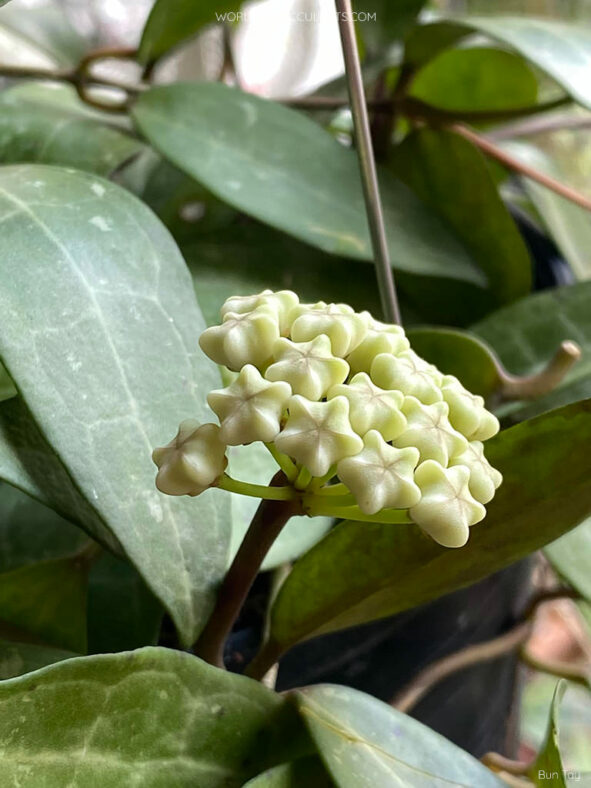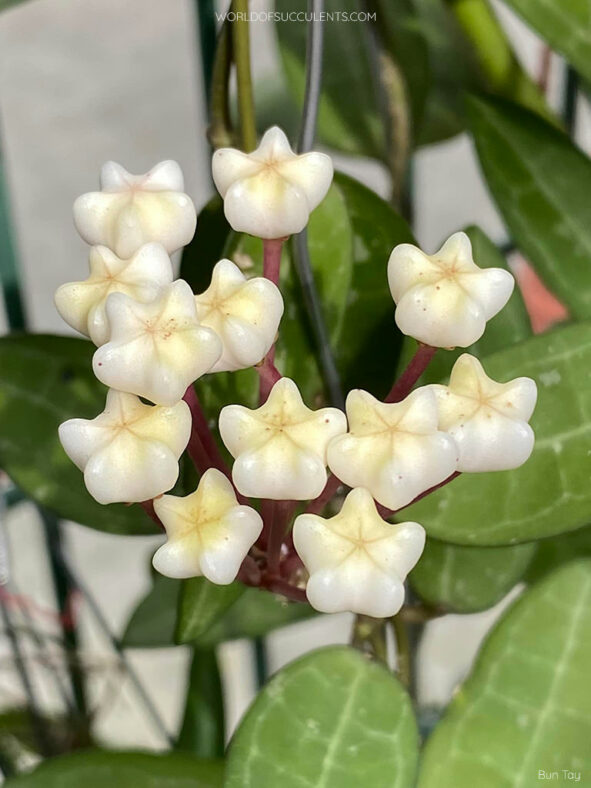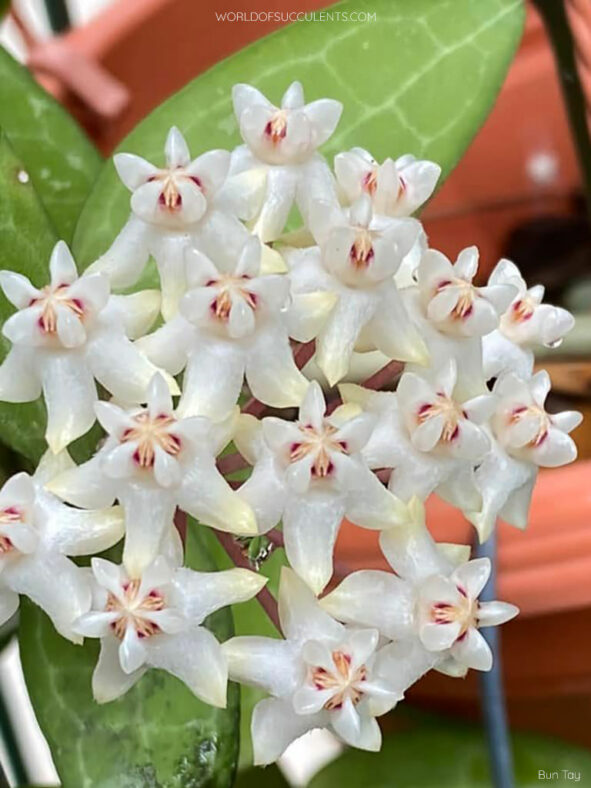Scientific Name
Hoya elliptica Hook.fil.
Common Name(s)
Turtle Shell Hoya
Scientific Classification
Family: Apocynaceae
Subfamily: Asclepiadoideae
Tribe: Marsdenieae
Genus: Hoya
Etymology
The specific epithet "elliptica (pronounced ee-LIP-tih-kuh)" means "elliptical" and refers to the shape of the leaves.
Origin
Hoya elliptica is native to lowland areas of Thailand, Borneo (Kalimantan and Sabah), Malaysia, and Sumatra, where it grows as an epiphyte.
Description
Hoya elliptica is a beautiful vine with long, wiry stems and unique olive-green leaves with raised lighter veins resembling the markings on a turtle shell. The leaves are fleshy and elliptical, measuring up to 4 inches (10 cm) long and 2.4 inches (6 cm) wide.
The sweetly scented flowers are up to 4 inches (1 cm) in diameter. They have a white to near-white corolla with five spreading to recurved lobes covered with short, soft hairs and a glossy, white corona with a dark pink center. The flowers appear in dense, rounded clusters from spring to late summer, lasting 5 to 7 days. The umbels typically have about 25 flowers.

How to Grow and Care for Hoya elliptica
Light: H. elliptica grows well indoors in bright indirect light but will tolerate pretty low light levels, although it becomes weak and leggy, produces fewer leaves, and may not flower without bright light.
Soil: Whatever soil you plant your H. elliptica in, it should be well-draining, provide excellent aeration, and not hold too much water.
Temperature: As a tropical plant, it thrives in warm, humid climates. During the colder months, keep it away from drafty windows and doorways. H. elliptical can withstand temperatures as low as 40 °F (4.4 °C). USDA Plant Hardiness Zones 11a to 11b are 40 to 50 °F (4.4 to 10 °C).
Watering: Water regularly in spring and summer. Soak the soil thoroughly until the water drains out of the drainage holes. Then, let the soil dry out between waterings. H. elliptica is relatively dormant and needs only moderate watering in fall and winter.
Fertilizing: This plant is not a particularly heavy feeder. However, it appreciates some extra micronutrients and macronutrients. Therefore, feed with half-strength high-potassium fertilizer every two weeks or so during the growing season.
Repotting: As an epiphytic plant, H. elliptica has quite shallow root systems and does not require a deep container, nor does it need to be repotted frequently. It prefers growing a bit tight in its container, so if it outgrows it, repot in spring.
Propagation: You can easily get new plants from your existing H. elliptica by stem cuttings. Leaf cuttings can be more problematic. The best time to take cuttings is spring or summer when the plant is actively growing. The easiest method of propagation is by layering. Starting this plant from seeds is the simplest but the most time-consuming way of propagation. Sow the seeds in spring or summer in well-draining soil.
Learn more at How to Grow and Care for Hoya.
Toxicity of Hoya elliptica
H. elliptica is non-toxic to humans and pets.
Hybrids of Hoya elliptica
Links
- Back to genus Hoya
- Succupedia: Browse succulents by Scientific Name, Common Name, Genus, Family, USDA Hardiness Zone, Origin, or cacti by Genus
Photo Gallery
Click on a photo to see a larger version.


